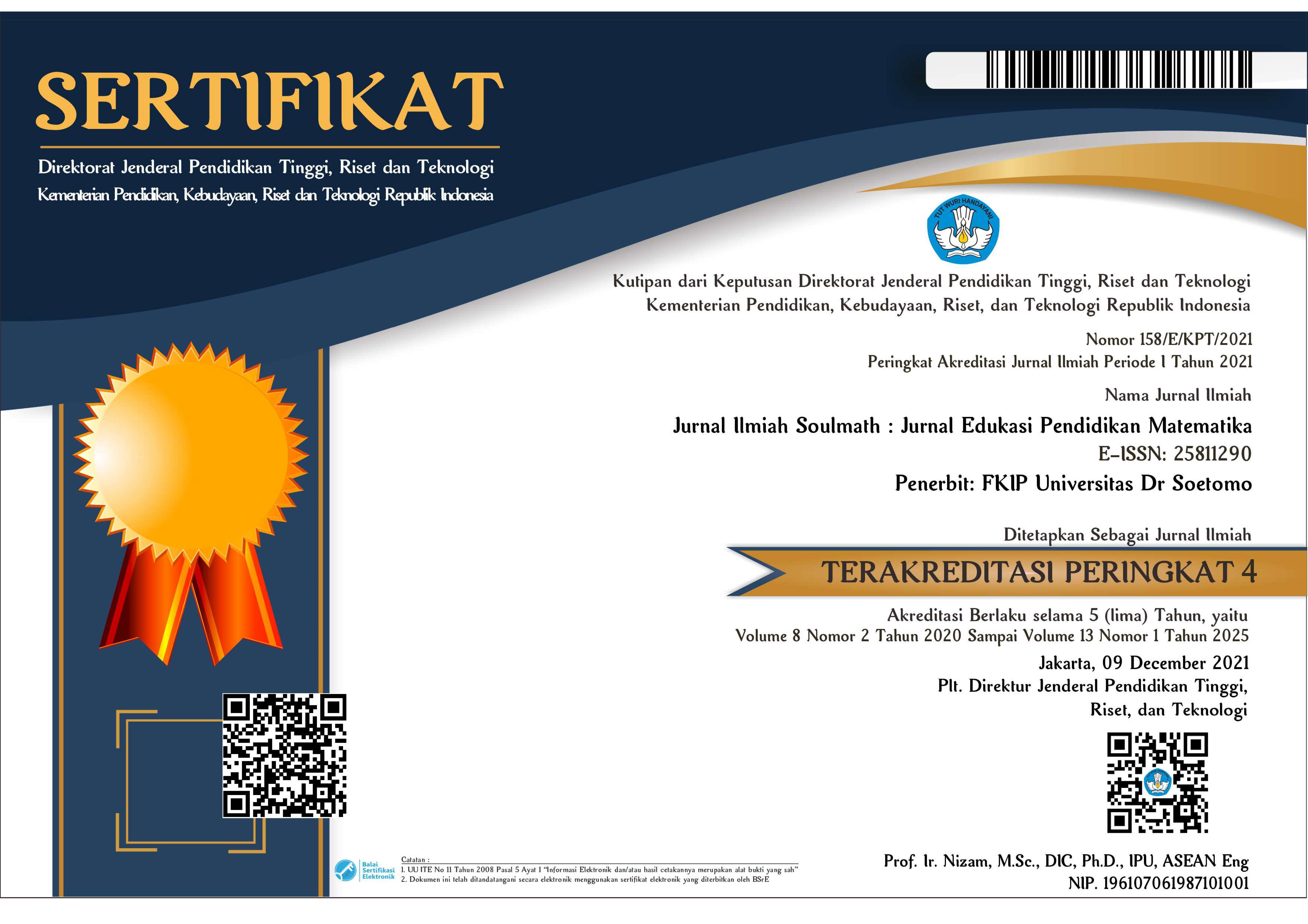Pengembangan Lembar Kerja Peserta Didik (LKPD) Berbantuan Canva yang Efektif
 Abstract views: 1140
,
Abstract views: 1140
,
 6020 Publish (Bahasa Indonesia) downloads: 1124
6020 Publish (Bahasa Indonesia) downloads: 1124
Abstract
Abstract
This study aimed to develop Canva-assisted Student Worksheets (LKPD) for eighth-grade students at MTsN 5 Padang City, focusing on enhancing their understanding of concepts in relations and functions. The research followed the Plomp model, involving three phases: initial investigation, prototype development, and evaluation. Questionnaires, interviews, and tests were used to measure validity, practicality, and effectiveness. Data analysis employed descriptive statistics. The results of the Canva-assisted LKPD development showed high validity, with a content, language, and presentation score of 93.02%. The LKPD also demonstrated practicality, achieving 87.77% and 89.39% scores from students' and teachers' perspectives, respectively. Factors like ease of use, time efficiency, attractiveness, comprehension, and alignment with the curriculum were considered. Additionally, the LKPD was effective, as 87.5% of students scored above the Minimum Mastery Criteria (KKM) in concept comprehension tests. Utilizing Canva in LKPD development successfully created an engaging product that improved students' understanding of mathematical concepts in relations and functions. The data collection method supported these findings, indicating that Canva-assisted LKPD enhances students' comprehension. The test results revealed that 28 out of 32 students (87.5%) achieved scores above the KKM threshold, categorizing them as "highly successful." The validation of Canva-assisted LKPD confirmed high validity in terms of presentation, language, and media aspects. Overall, the LKPD was considered "highly practical" and had the potential to enhance motivation and the effectiveness of mathematics learning. Therefore, the utilization of Canva-assisted LKPD offers an effective alternative for improving students' understanding of mathematical concepts.
Keywords: LKPD, Canva, Understanding Mathematical Concepts, Plomp Model.
Downloads
References
Abdul Haris Pito. "Media Pembelajaran dalam Perspektif Al-Qur'an." Andragogi: Jurnal Diklat Teknis Pendidikan Dan Keagamaan 6.2 (2018): 97-117.
Andi Susanto dkk. "Pengembangan Media E-Comic Matematika Berbasis Contextual Teaching And Learning Pada Materi Aritmatika Sosial Untuk Peserta Didik Kelas VII SMPN 1 Sintuk Toboh Gadang." Math Educa Journal, 2022, 6.2: 151-162, hlm. 152.
Andi Prastowo, ''Pengembangan Bahan Ajar Tematik Tinjauan Teoritis dan Praktik.'' (Jakarta: Kencana Prenada Media Group, 2014), p. 269.
Andi Susanto. Kemampuan Pemahaman Konsep Matematis Model Reciprocal Teaching (Rt) Dan Model Air Auditory Intellectualy Repetition (Air). Math Educa Journal, 2019, 3.2: 219-230, hlm. 224.
Rivdya Eliza dan Fenny Susilawati, "Kemampuan Pemahaman Konsep Matematis dan Kemandirian Belajar Peserta Didik dengan Model Pembelajaran Inquiri." Math Educa Journal, 2019, 3(2): hlm 145.
Nita Putri Utami, "Keefektifan Perangkat Pembelajaran Matematika Berbasis Discovery Learning Pada Kelas X SMA." Math Educa Journal, 2017, hlm 157.
Rahma Elvira Tanjung dan Delsian Faiza, ''Canva Sebagai Media Pembelajaran Pada Mata Pelajaran Dasar Listrik dan Elektonika.” Voteknika: Jurnal Vokasional Teknik Elektronika dan Informatika, vol 7, no 2, Juni 2019, h.79-85.
Plomp, T dan N. Nieveen. "Educational Design Research." Enshede: Netherlands Instute For Curriculum Devlopment (SLO). 2013
Rahmayanti, D. (2020). Pengaruh Penerapan Media Pembelajaran Canva Dengan Pendekatan Saintifik Terhadap Hasil Belajar Dasar Listrik dan Elektronika. Jurnal Vocational Teknik Elektronika dan Informatika, 8(4), 108. ISSN: 2302-3295, hlm. 108.
Sundayana, R. (2015). Media dan Alat Peraga Dalam Pembelajaran Matematika. Bandung: Alfabeta, hlm.29.
Arsyad, A. (2015). Media Pembelajaran. Jakarta: Raja Garafindo Persada, hlm. 8-11.
Sungkono. (2008). Pemilihan Penggunaan Media Dalam Proses Pembelajaran. Majalah Ilmiah Pembelajaran, No.1, Vol. 4, Mei 2008, hlm. 76.
Mudlofir, A., & Rusydiyah, E. F. (2016). Desain Pembelajaran Inovatif. Depok: PT RajaGrafindo Persada, hlm. 129.







